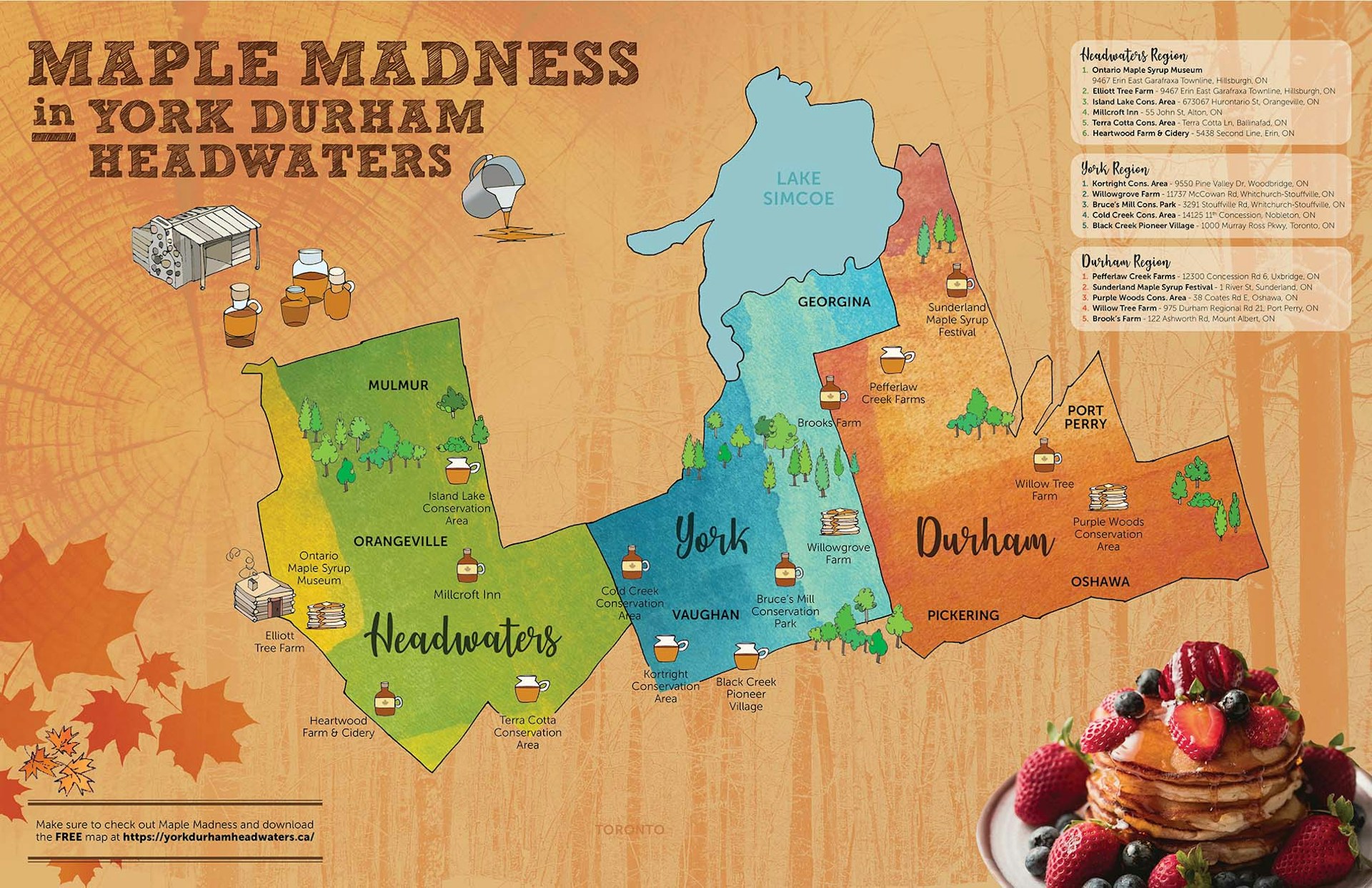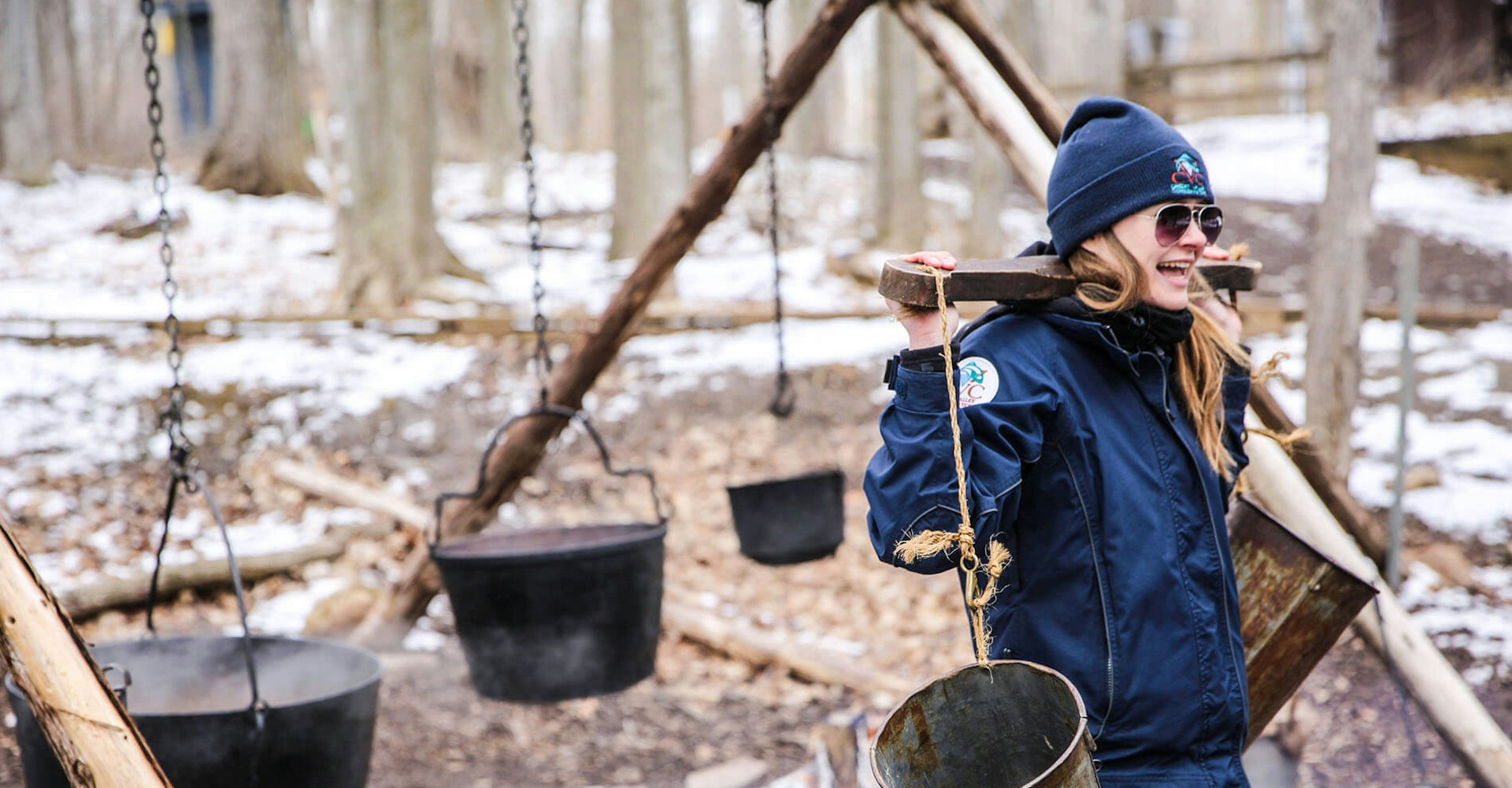When Stephen Colbert introduced a story about Canada in a monologue, what adjective fit like a warm woollen toque? You’re right, it was “maple”.
The association goes far beyond the flags of Canada and Ontario. Maple syrup is in our blood. From year-round maple-dipped donuts at Tim’s to seasonal maple lattes at Starbucks; from the tables of the better all-day breakfast restaurants to specially boxed fudge at the holidays, maple products are everywhere!
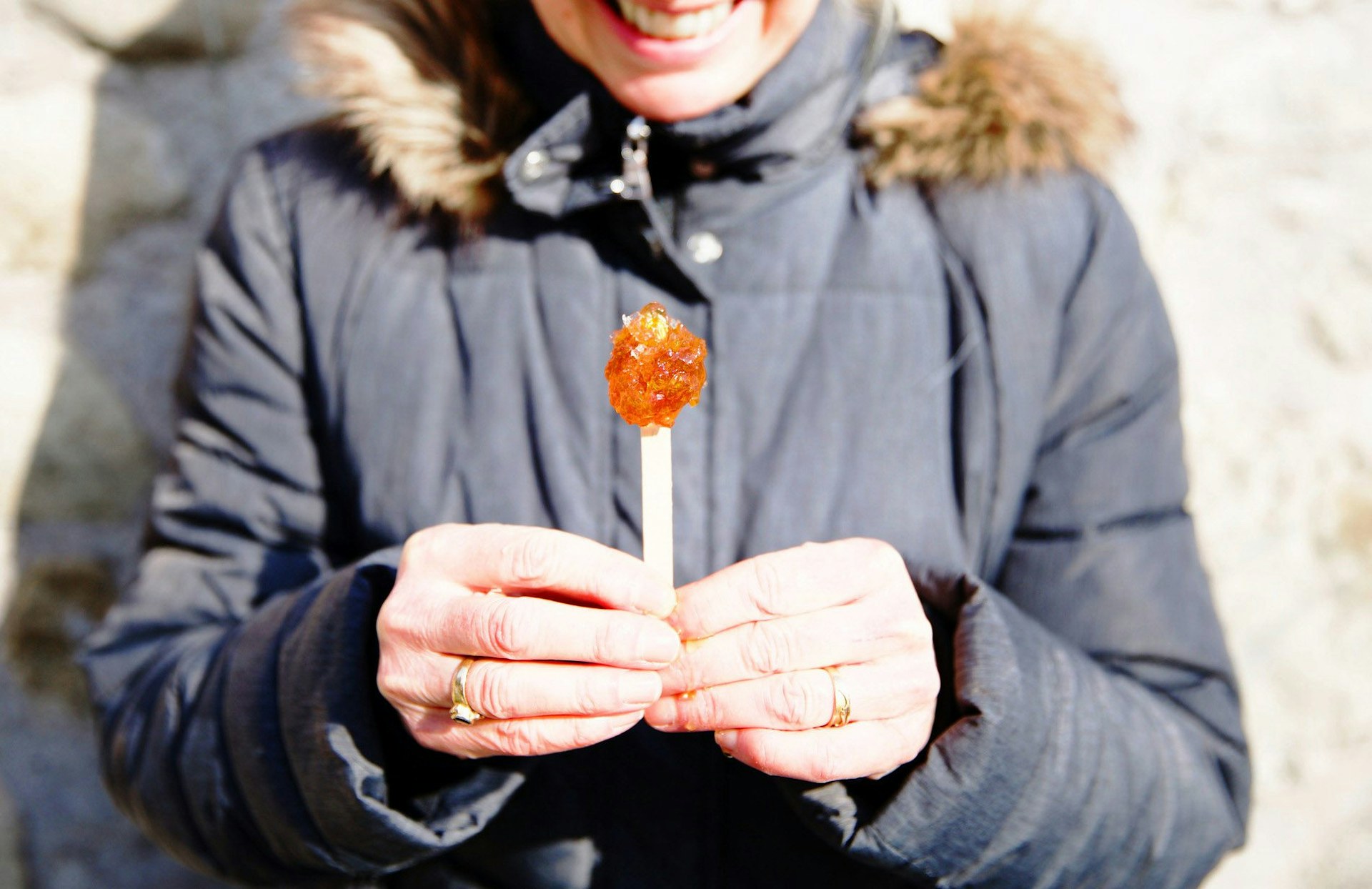
Canada is the number one producer and exporter of maple syrup in the world. More than 14 million gallons of that sweet goodness are bottled annually. That’s more than 75% of global output, with exports valued in excess of $400 million annually.
So how did this come to be?
The prehistory of maple harvesting goes back millennia. Algonquin tribes knew maple syrup as a source of energy and nutrition, and rituals evolved around its annual early spring appearance. The first full moon of spring was the Sugar Moon and ceremonial dances were performed to give thanks.
In the early days, sap was harvested by making a V-shaped cut in maple tree bark and using a hollow reed or strip of wood to direct the sap to a clay or wooden vessel below. Bowls would be left to freeze overnight and the top layer of water ice would be discarded to leave a more concentrated liquid behind. All of the small containers would then be gathered to a central location for the sap to be filtered and boiled in clay pots, leaving smooth delicious maple syrup to be consumed or traded. Pouring syrup over snow made maple taffy. Further straining, heating, thickening and stirring produced maple sugar, another valuable commodity.
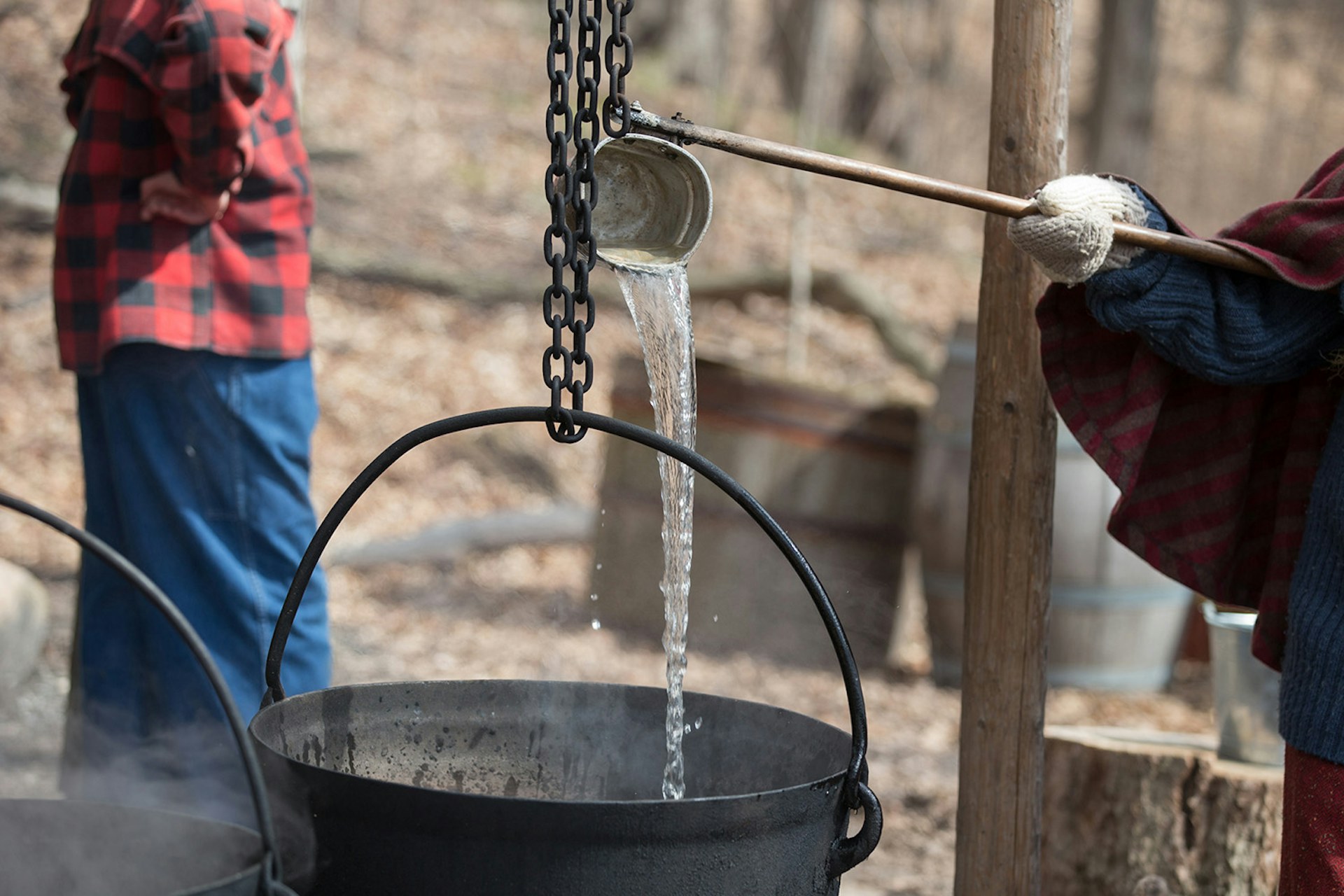
Here’s a Quebec researcher with a perspective on the history of maple syrup in Canada: https://www.youtube.com/watch?v=wXFYK5jmuX4&ab_channel=%C3%89rableduQu%C3%A9bec
Here’s an elder from the Credit Valley First Nation on the lore of the maple tree: https://www.youtube.com/watch?v=nNygqaJTIl0&ab_channel=CreditValleyConservation
European settlers brought metal tools and commercial ambitions to the sugar bush. Around the time of the American Civil War (1861-1865), large flat metal pans began to be used for boiling sap. When Caribbean sugar cane became the popular sweetener, maple merchants concentrated their efforts on maple syrup.
Advances in technology lead to the present day industrial-scale collection of sap through networks of plastic tubing stretching all the way from the sugar bush to the sugar shack (the dedicated syrup processing outbuilding), the flow regulated by gravity and vacuum pumps. Reverse-osmosis machines draw water from the raw sap before rounds of boiling refine the syrup.
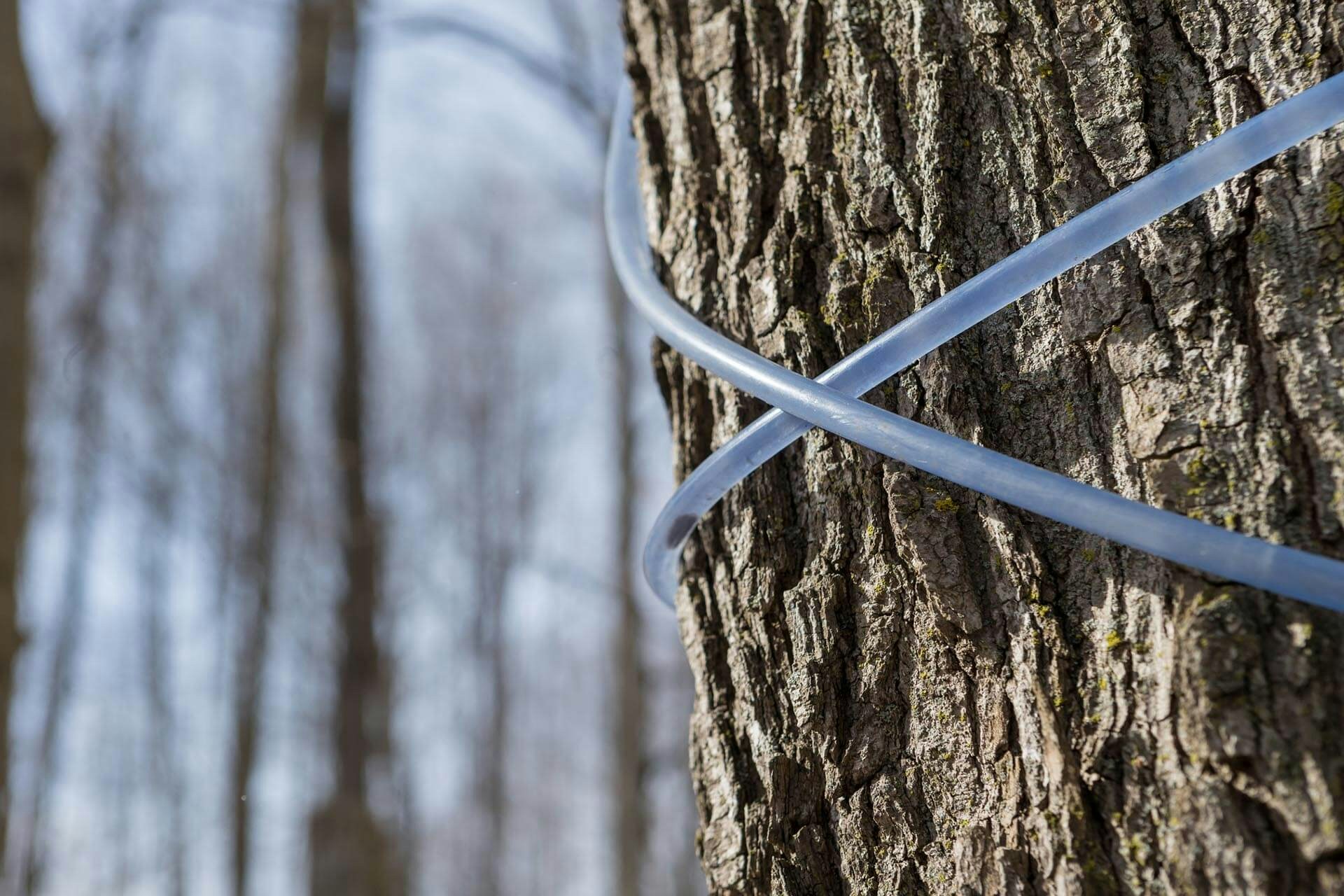
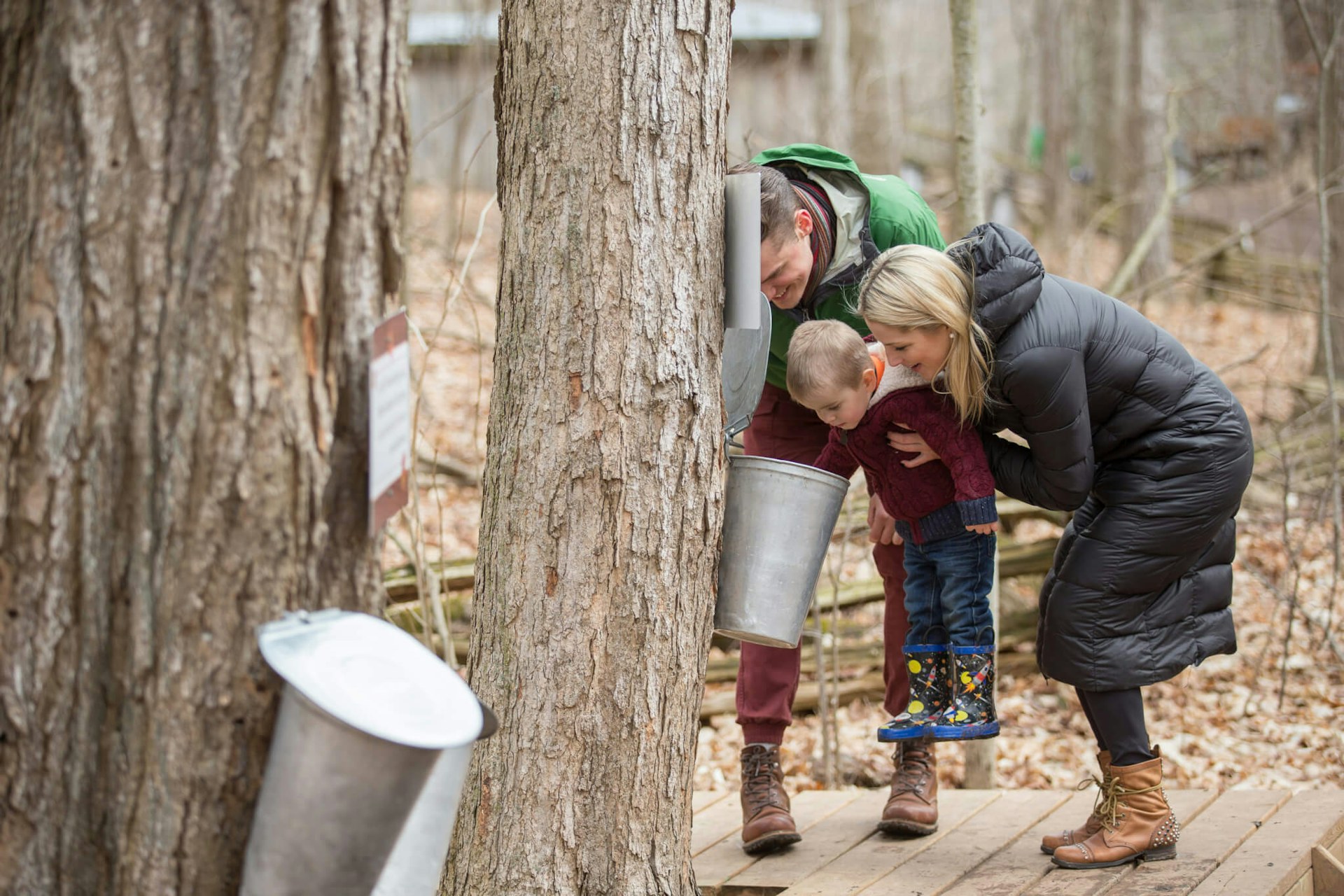
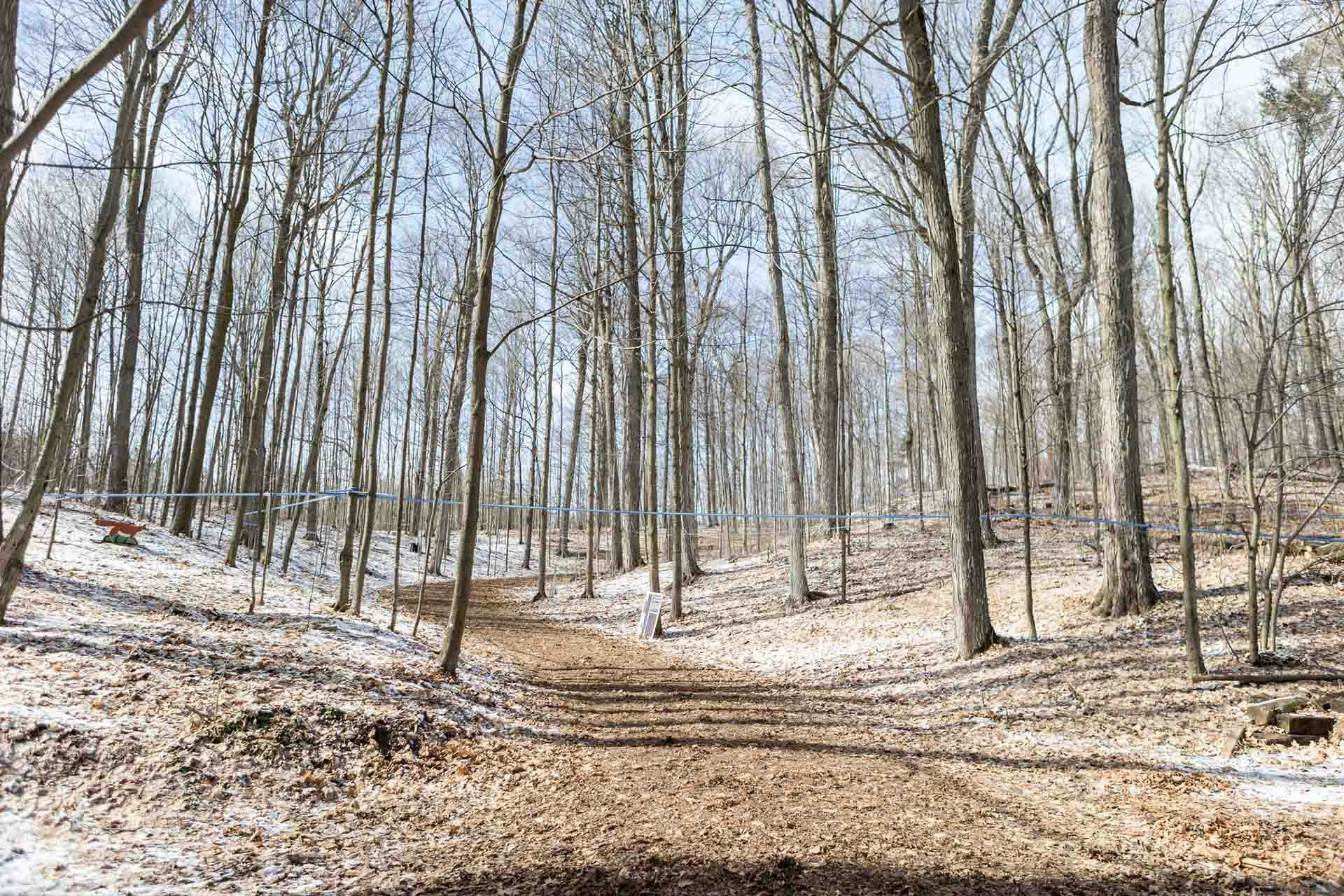
HARVESTING AND PRODUCTION
Maple sap begins to flow when the weather starts to warm in mid March. Maple trees transport water and nutrients from their roots to the branches and limbs above so that buds and leaves will have the energy to grow. As long as daytime temperatures are above freezing and nighttime temperatures below, the sap is sweet and the game is on.
It is well known that sugar maple trees yield sap with the highest sugar content. Forty gallons of sugar maple sap reduces to one gallon of syrup. Red, black and silver maples may also be tapped, but much more sap is needed for a significant yield.
Trees to be tapped should be mature, at least 12 inches in diameter. Trees above 20 inches in diameter will support two taps, and above 27 inches, three. New holes should be drilled at least 6 in from old ones. The height for drilling will depend on whether the tree is to be part of a connected network or, in a smaller operation, to be tapped separately, usually 3 to 4 feet above the ground.
Sap flows more easily on the warmer south side of a tree, and if there is a large root below or large limb above, even better. Holes are drilled at a slight upward angle, to a depth of just over 2 in. Stainless steel or plastic spiles, as they’re called, are tapped into the holes, and buckets suspended below or tubes connected. All equipment is scrupulously clean, of course, to avoid harming the trees and tainting the sap.
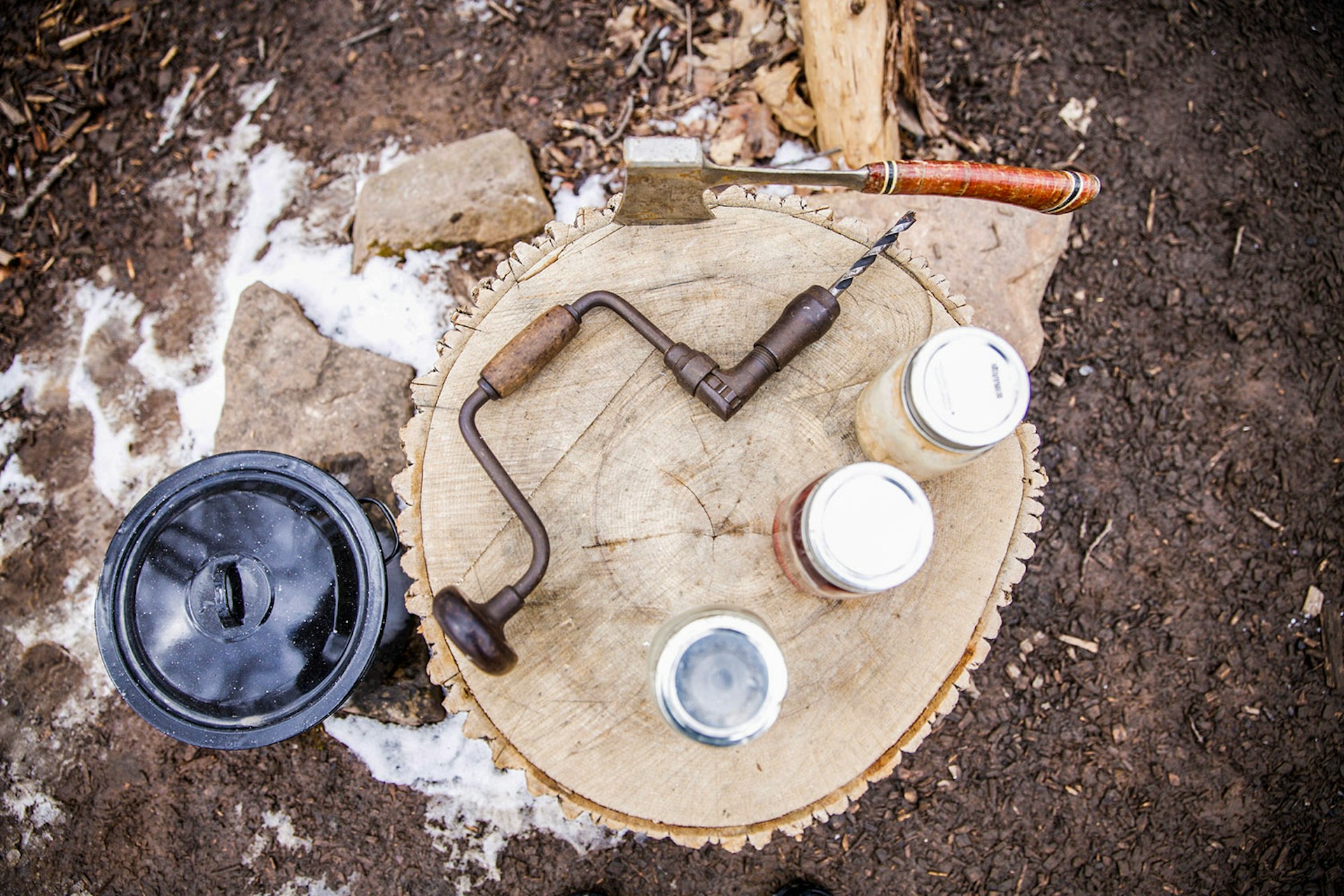
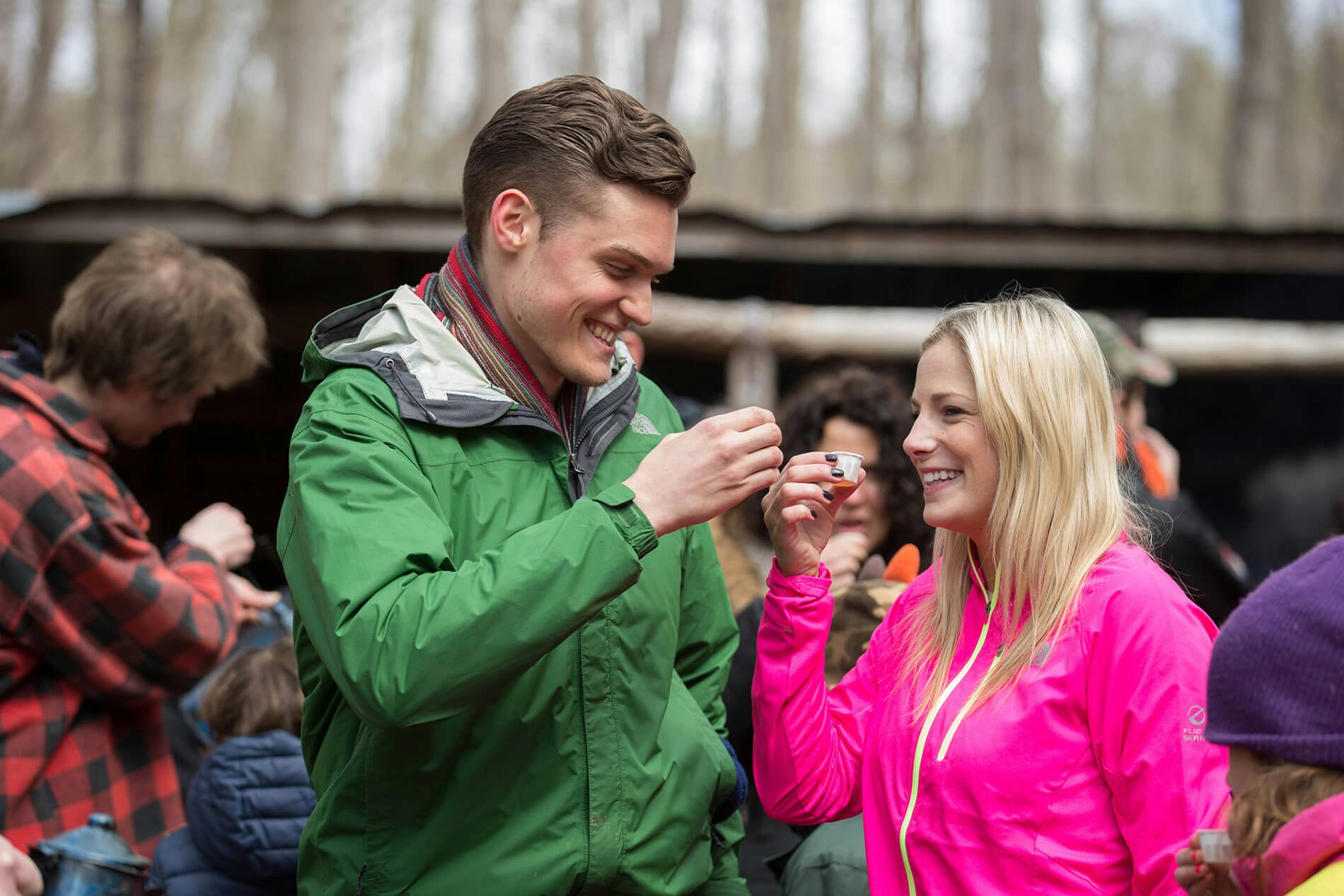
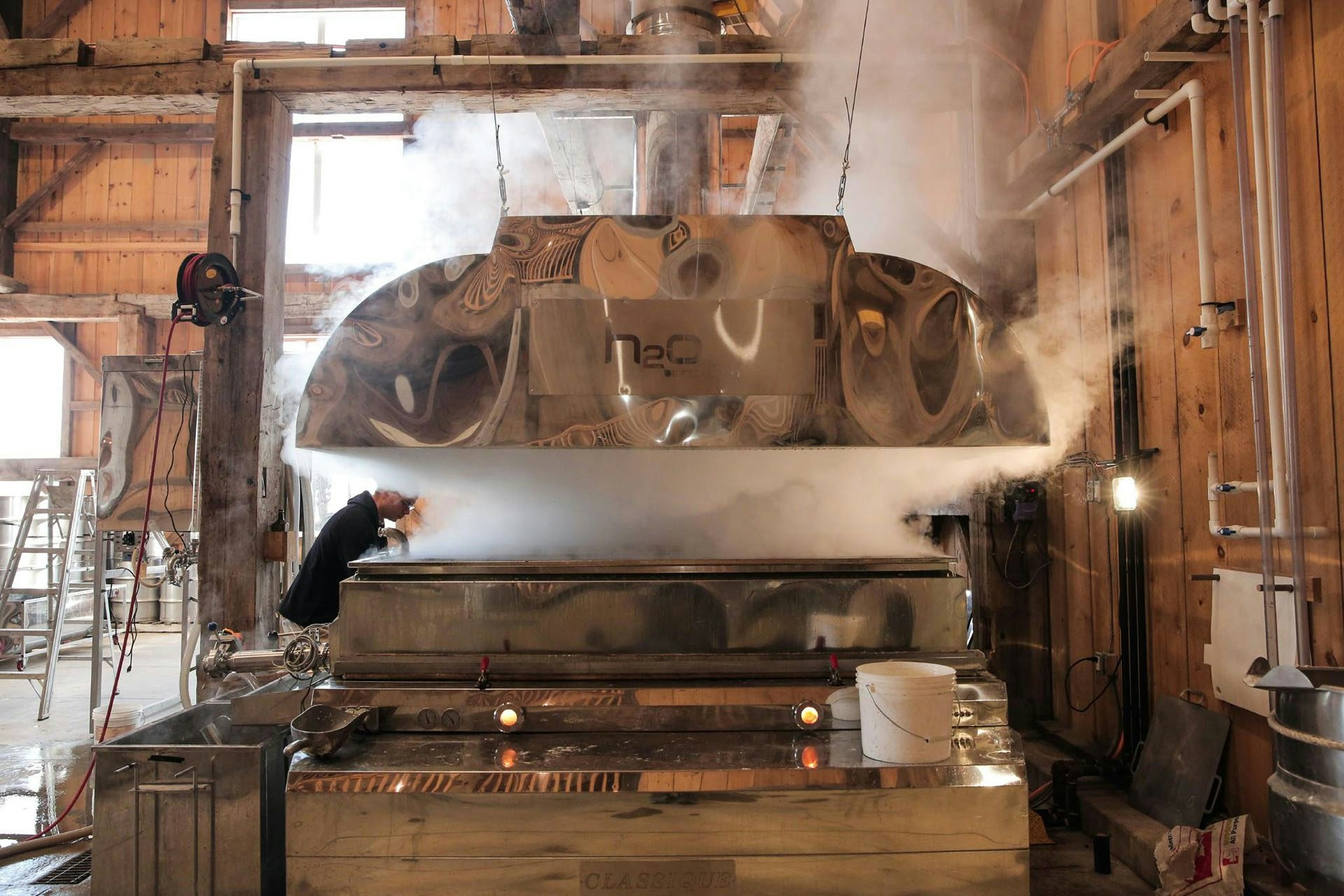
Once the syrup is collected in the sugar shack, it is boiled multiple times to reduce the water content. Recently reverse osmosis has been used at the beginning of the reduction process to cut boiling time. The final step in the industrial process involves a filter press—multiple layers of filter paper combined with diatomaceous earth to remove any remaining impurities.
Today, the harvest, boiling and filtering of maple syrup is standardized and regulated. From tree to bottle, every step has been refined so that purity, sweetness (66% sugar content) and colour can be guaranteed.
Here’s an Ontario producer’s video with more insights: https://www.youtube.com/watch?v=lGMeYh5cuuc&ab_channel=fultonsmaple
CANADIAN MAPLE SYRUP REGIONS
Maple syrup is produced in significant quantities from Ontario to Nova Scotia with Quebec far in the lead in terms of volume and sales. This spring, as always, Ontario producers will host events to celebrate this year’s harvest. You can find festivals and events happening in YDH bellow!
HEALTH BENEFITS
Maple syrup contains sugar, of course, but not as much as honey. It also contains an array of minerals, notably manganese which is important for bone health. And it is rich in antioxidants, particularly in the darker syrups, that reduce the effects of aging on our tissues. Maple syrup can also be applied to the skin to reduce inflammation, redness and dryness. Mixed with rolled oats and yogurt, it makes a natural hydrating facial mask.
We do need to be mindful of our sugar intake, but as a sweetener, maple products are much better for us than refined sugar. Try adding a little to your coffee or your oatmeal, and get your daily dose of vitamins!
Youtube has a full array of maple syrup-making videos, from backlot family operations to serious commercial enterprises. We’ve linked to some of the best above. What they have in common is the obvious joy in the experience: tapping the trees, collecting the sap, boiling, boiling again, filtering, and bottling. And of course tasting in all its wonderful forms.
Canada has a proud history in the maple syrup industry.
YDH PRODUCERS AND MAPLE FESTIVALS
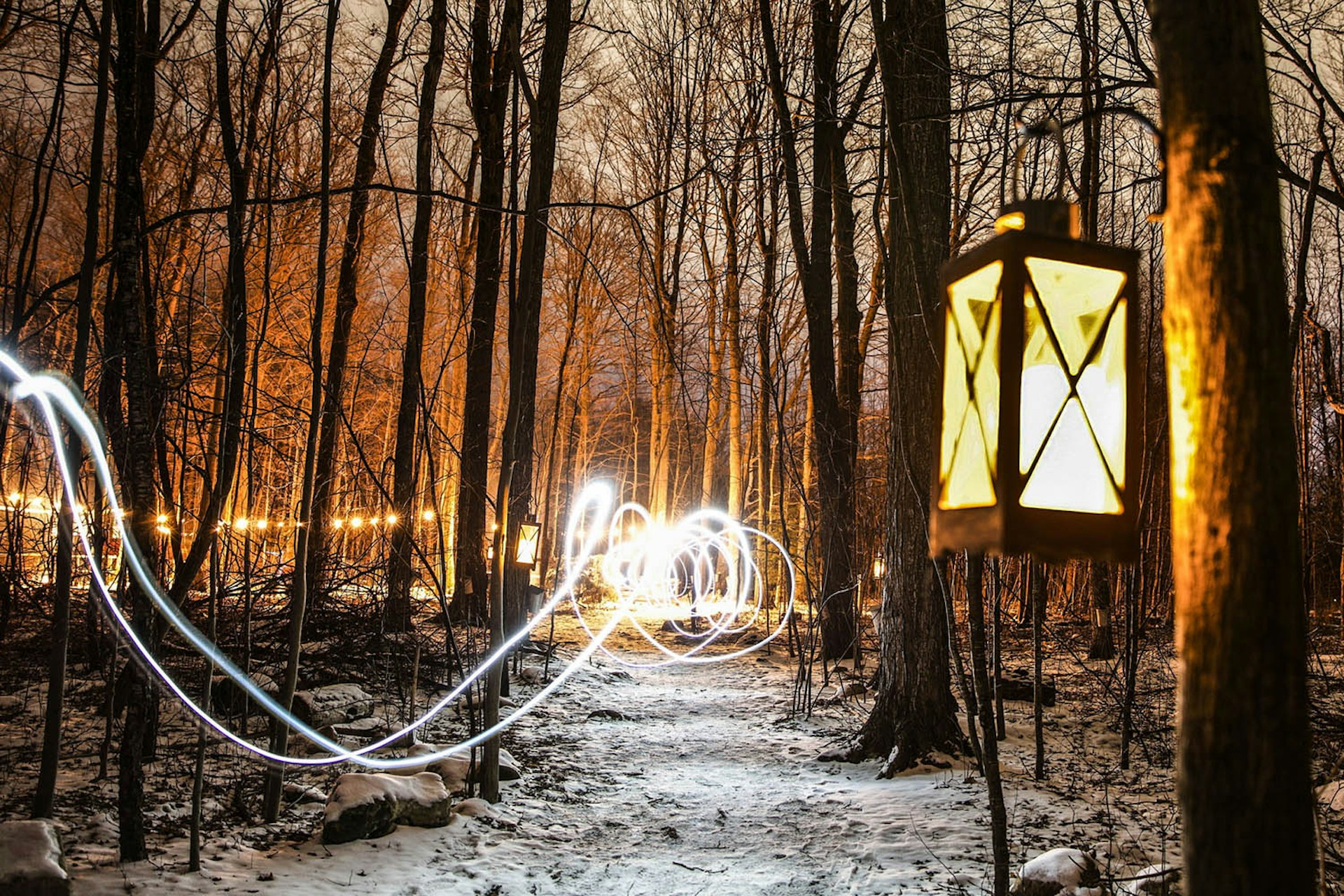
Where to get your maple syrup this year, and some outdoor adventures!
Elliott Tree Farm Maple Syrup Experience
Offers a full trail to table adventure.
Sugarbush Maple Syrup Fest
Come out and tap into spring! Enjoy demonstrations and activities…. and of course real maple syrup!
Special family-fun activities on weekends and March Break!
At Kortright Centre for Conservation & Bruce’s Mill Conservation Park
Maple Syrup by Lamplight Kortright Centre, Vaughan
Tap into Spring with a magnificent evening that begins with a guided twilight tour of Kortright’s maple sugar bush.
Cold Creek Maple Syrup Fest
Filled with loads of fun activities and the opportunity to learn about the process of syrup making it is a great event for the whole family!
March 9, 2024
Maple Syrup at The Village
Celebrate the charm of maple syrup season, as the Village buzzes with energy of early spring.
March 11 – 15, 2024
Black Creek Pioneer Village
Willowgrove Farm Maple Syrup Tours
Come join the fun, in one of our small group Maple Syrup Tours. Learn about the history of syrup production, sample syrup in the sugar shack and try your hand at tapping a Maple tree.
March 9 – 16, 2024
Heartwood Farm and Cidery
Offers horse-drawn sleigh rides: https://heartwoodfarm.ca/products/horse-drawn-sleigh-rides
March 2, 3, and March 9 – 10
Brooks Farms Maple Sugar Festival
Offers weekend and March Break sugar bush tours. Book here: https://fareharbor.com/embeds/book/brooksfarms/items/355715/calendar/2022/02/?flow=577568&full-items=yes
Sunderland Maple Syrup Festival
Back after two years, April 6 & 7. Outdoors only.
Purple Woods Maple Syrup Festival
Offers self-guided tours of their sugar bush weekends and March break from March 8 – April 7. First come, first served.
Pefferlaw Creek Farms
Store and trails open weekends from March 2 – April 21 Part of Sunderland Maple Syrup Festival.
Download your very own maple syrup map below!
